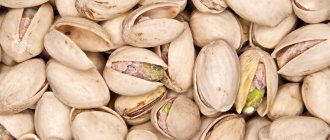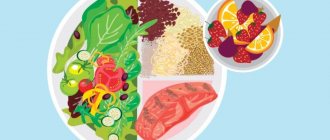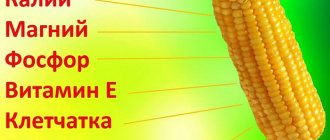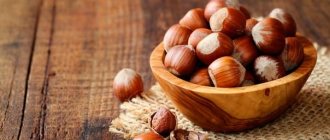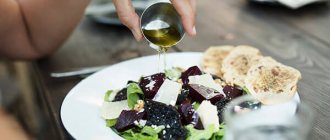Potatoes are a source of starch
Potatoes have historically been a starchy staple food. For hundreds of years it has been an important, affordable food in our diet. The economic and health consequences of the Irish potato famine between 1845 and 1849 are widely known, as a result of which between 500 thousand and 1.5 million people died and 1.5 million people were forced to leave the country. As a staple food, potatoes continue to play an important role in global food security, ensuring a sustainable food supply and reducing poverty and malnutrition in many parts of the world, as highlighted in the Food and Agriculture Organization of the United Nations (FAO) review of the International Year potatoes." The yield sustainability of any crop is determined in part by the land area required, as well as water and energy requirements. To produce a tonne of potatoes, only 0.06 hectares of land are required, while rice and wheat require 0.24 and 0.35 hectares of land respectively. Additionally, potatoes and wheat require less water compared to rice. Most cultivated varieties are of the Solanum tuberosum species, and over the last 60 years, plant biotechnology has complemented traditional potato breeding, resulting in specific genotypes or varieties. An estimated 377 million tons were harvested in 2020, ranking 4th behind other major starches, corn, wheat and rice (Figure 1).
Annual per capita data for 2013 also show that potatoes and potato products are the third most consumed diet, behind wheat and rice. Although corn ranks higher in terms of global production, it is used in large quantities as feedstock for the production of glucose, fructose and corn syrup, as animal feed, and is also increasingly used for industrial applications.
Despite existing recommendations for the use of starch in the diet, the nutritional value of potatoes is usually ignored, partly because they are not included in the fruit and vegetable intake recommendations, and also because they are often cooked with fats or oils. Indeed, as early as 1918, the popularity of potatoes was explained by the fact that “the lack of taste allows them to be flavored by adding milk, butter and cream, salt and pepper, or by frying them in fats.”
Application
Cooked without butter or sour cream, boiled potatoes are an excellent dietary dish. Potatoes can be boiled in two ways - put whole tubers in water without peeling them, or peel and cut the potatoes into several parts. Potatoes boiled in their skins (“in their jackets”) retain more nutrients. Young potatoes should be immersed in already boiling water, and old ones, on the contrary, into cold water. Boiled potatoes are an independent dish and also go well with any fish and meat dishes.
Market Analytics
- Black Lives Matter movement: reaction and consequences for the beauty industry
- COVID-19 is changing the rules of the game in the cosmetics market
- Beauty of the future: cosmetic innovations 2020
Convenient search for beauty salons on our website
Beauty salons in Moscow Beauty salons in St. Petersburg Beauty salons in Ekaterinburg Beauty salons in Novosibirsk
Latest blog posts on our website
- Naturecream / Apricot kernel oil for face
- Naturecream / MATRIXYL3000 - the best skin elasticity stimulator
- Naturecream / SPF in Natural Oils
- Naturecream / Geranium (Pelargonium) oil for skin health and beauty
- Prostye-sovety / Save on a beauty salon: procedures that can be done at home
- Naturecream / Growth Factor - brings back youth?
- Oksana-Lezina / 3 effective abdominal exercises from a fitness instructor for beginners
- Prostye-sovety / Making perfect curls at home
- Prostye-sovety / Which hair removal method to choose
- Naturecream / Wrinkles Puppets
Latest forum topics on our website
- Natalya / How to properly make a gelatin mask?
- Mrs._Smith / Badly sunburned! What to do?((
- Ice / Is it necessary to combine fitness classes with a diet?
- Antonova / What can be used for hair loss?
- Radio operatorKat / Who was on a protein diet?
Other articles in this section
| Arracacha Arracacha is a root vegetable of the Umbelliferae family from Latin America, related to carrots and celery. Most common in Brazil, Colombia, Ecuador and Venezuela. The harvest season lasts from January to September. Unlike potatoes, which were brought to Europe from Latin America, arracacha is a very rare vegetable for mid-latitudes. Fruits develop only under certain temperature conditions; root ripening lasts several months. It is very difficult to grow this crop in a continental climate. In Venezuela this vegetable is called “Creole celery”, and in Ecuador it is called “white carrot”. In Brazil, arracacha is grown on an industrial scale. There are several varieties of root vegetables - yellow, orange and white. |
| Chickpeas Chickpeas, or chickpeas, are a legume plant traditionally grown in the Middle East. In this region, protein-rich legumes still form an important part of the diet. It is also called Turkish peas. The first mention of chickpeas occurs about seven thousand years ago. It was grown by the ancient Egyptians, Greeks and Romans, and in the Middle Ages, Spanish and Portuguese travelers brought the crop to the New World. |
| Jicama Jicama is a sweet root vegetable of the legume family native to South America. Jicama tubers resemble potatoes, have a brown, dense skin and white, juicy, crisp flesh. Raw jicama tastes similar to pear or apple. It is most often found in Mexico and other Central American countries, where it is also called Mexican potato, Mexican turnip, and Mexican water chestnut. |
| Squash caviar The homeland of the pumpkin family, to which the squash belongs, is located in Central America. Scientists find pumpkin seeds in caves dating back to 5500-7000 BC. e. Zucchini quickly spread across the South American continent and, along with maize (corn) and beans, became part of the daily diet of the local population. Together with Christopher Columbus at the end of the 15th century. the seeds of squash and other pumpkin came to Europe. |
| Romaine lettuce Romaine lettuce, or romaine, has been cultivated since ancient times. Also sometimes called cos salad. Its homeland is in the eastern Mediterranean. From the 5th century n. e. Romaine lettuce began to be grown in China. There it was considered a symbol of good luck. Romano was served on the table on holidays - New Year, birthdays. It differs from lettuce in having larger, dark green leaves with a crunchy texture. |
| Dill Dill is an annual or perennial herbaceous plant native to southern Russia, western Africa and the Mediterranean region. For thousands of years, dill has been used in cooking and medicine. So, it is mentioned in ancient Egyptian scrolls and in the Bible. In ancient Greece and Rome, dill was considered a symbol of wealth, and warriors applied dill seed powder to wounds to promote healing. |
| Patisson Patisson is a type of zucchini. Its round, flattened shape with curly edges resembles a plate. The color varies from white to light green and the taste is similar to zucchini. Patisson is a very ancient crop; it began to be grown in Mexico more than 5 thousand years ago. This vegetable was very popular among the indigenous population of South America and was included in the daily diet. The name comes from the French word patisson, which means a cake baked in a pan with scalloped edges. |
| Horseradish Horseradish belongs to the cruciferous family, like radish, cabbage and mustard. The long, pointed root of the plant, which has a pungent taste and pungent aroma, is used in cooking. This vegetable crop is common in Eastern Europe and the Mediterranean. |
| Green peas From a botanical point of view, green peas are not a vegetable, but a fruit, since after flowering they form seeds. Vegetable plants do not have seeds. The pod contains from two to ten round seeds. This unpretentious plant of the legume family has been used in cooking for several thousand years. It is believed that its homeland is in Central Asia and the Middle East. |
| Romanesco cabbage Romanesco is the most unusual member of the cruciferous family. This variety is closest to broccoli and cauliflower. Its inflorescences are organized in a strict sequence, reminiscent of the classical Fibonacci series in mathematics. The inflorescences form a spiral, and each spiral consists of a group of similar small spirals. This fractal pattern repeats itself many times as the inflorescences become smaller. Romanesco cabbage was first mentioned in Italian sources of the 16th century. It was developed on the northwestern coast of the Mediterranean from wild kale. |
Fiber in potatoes
Dietary fiber is a mixed group of heterogeneous compounds, mostly in the form of carbohydrate polymers and oligomers. All definitions of the term dietary fiber refer to substances that escape digestion in the small intestine and pass into the large intestine, where they will be fermented to varying degrees by the resident microbiota. The dietary fiber composition of potatoes consists of resistant starch with small amounts of non-starch polysaccharides such as cellulose (0.45–0.7%), hemicellulose (0.32–0.46%), lignin (0.15–0.22%) and pectin ( 0.32-0.38%) wet weight of potatoes.
Results
Summing up the benefits of the popular root vegetable, it is worth highlighting the following points:
- In terms of protein content and dry weight, potatoes are on a par with grain crops.
- The product is rich in potassium and is essential for the regulation of muscle activity.
- When consuming the product, the risk of scurvy is reduced.
- Knowing how much protein is in potatoes, as well as the amount of carbohydrates and fats, you can create an ideal diet.
- When purchasing this product, you should give preference to hard tubers that have a uniform color.
- It is not recommended to take potatoes with greens. This means storing it in the sun and containing a toxic substance.
Resistant starch in potatoes
Resistant starches (RS) are the sum of both starch undamaged by hydrolysis and starch degradation products that reach the large intestine and undergo fermentation there. PC can be divided into five subtypes, namely, physically entrapped starch (PC1), raw starch granules (PC2), retrograde starch (PC3), chemically modified starch (PC4) and amylose-lipid complex (PC5). The starch in the raw potato tuber makes up ~75% PA2, and the granules are resistant to enzymatic digestion. Data on the exact PK2 content of raw potato tubers is sparse as potatoes are not typically consumed raw, but estimates are in the range of 47-59% and vary by variety. Thus, an “average” raw potato will contain 10g DO/100g wet weight. Potatoes are boiled before use, and when the starch is heated in excess water, gelatinization occurs and the starch becomes easily digestible. Both high temperature and water influence this process, and after cooking, the PK2 remaining in the cooked product is relatively low (2-4%), according to the cooking method, the amount of PK2 obeys the following hierarchy: baked > microwave >> boiled. If gelatinized starch is allowed to cool, the amylose and amylopectin chains recrystallize in a process known as retrogradation. Recrystallized or retrograde amylose is resistant to the action of small intestinal α-amylase and forms PK3. One study compared baking and boiling methods for three different potato varieties and measured DO content at three operating temperatures: hot, cooled, and superheated. Although no significant differences were found between varieties, more DO was reported in baked and boiled potatoes across all varieties and more DO was reported in chilled potatoes than in hot or reheated potatoes. During deep frying of potatoes, DOs can be produced by the formation of complexes between starch and other compounds in the potato or food matrix, such as lipids. These resistant starches are called PK5. To summarize, any potato product eaten will contain variable amounts of PK2, PK3 and PK5 due to differences in cooking methods, cooking time, and cooking and storage temperatures.
Let's talk about calories
Boiled potatoes: counting calories
How many calories are in boiled potatoes? You will be surprised! Per 100 grams of product - no more than 70 kcal. However, the number of calories directly depends on the method of cooking and serving the dish. For example, cooked with sour cream, fried onions or butter, the root vegetable increases the calorie content significantly.
How many calories are in boiled potatoes per 100 grams of product, prepared in various ways, is indicated in the following list:
- boiled in the skin (“country style” or in its uniform) - 77 kcal;
- boiled without peel - 80 kcal;
- boiled with butter - 127 kcal;
- boiled with onions fried in vegetable oil - 125 kcal;
- crushed with hot milk - 97 kcal;
- boiled, crushed with mushrooms - 102 kcal.
Mashed potatoes with pieces of lard are very high in calories. It reaches 171 kcal. For dumplings with potatoes, the energy value of the dough is added. Oven-baked potatoes (in their jackets) - 98 kcal.
Mashed potatoes
One of the most popular dishes on the European table is mashed potatoes. It comes from France, a country of gourmets and true connoisseurs of taste. Each of us has known the delicate structure and delicious aroma of mashed potatoes since childhood. A big plus for those food lovers who are at the same time trying to lose weight is that the energy value of mashed potatoes is not much higher than the calorie content of their boiled counterpart.
If you prepare this dish according to the traditional recipe with butter and milk, then there will be no more than 133 calories per 100 grams of product. It’s easy to guess that reducing calories means eliminating one of the additional components. Or you can do both at once!
An option to reduce the calorie content of mashed potatoes is to make it with a raw chicken egg instead of milk and vegetable oil instead of butter. Then the figure will be 128 kcal. per 100 grams of product.
Perfect puree: video recipe
Fried potato
One has only to remember the sizzling frying pan with potatoes, and thoughts about the dangers of fatty foods and the calorie content of such a dish begin to fade and recede. How many calories are in fried potatoes depends on the way it is prepared and the ingredients of the dish. Thus, food cooked in oil (with the exception of fries and chips) has significantly fewer calories than the same dish cooked in lard.
- fried in vegetable oil - 204 kcal;
- calorie content of fried potatoes with lard - 212 kcal;
- Favorite among fast food lovers, French fries and chips from McDonald's or Little Potatoes have an exorbitant amount of calories - over 316 units!
Despite the last figure, people are simply crazy about these unhealthy and high-calorie dishes. Nutritionists will not change their opinion that fatty foods and chips will never become healthy and promoted. If you want to eat healthy and take care of your health, then remember how many calories are in fried potatoes, french fries and chips, and give up these foods.
Homemade chips in the microwave: video
New potatoes
Scientists have found that calories tend to accumulate in vegetables as they are stored. So, 100 grams of product in young potatoes contains:
- raw - 61 kcal;
- boiled or baked - 66 kcal;
- in a dish with butter and herbs - 84 kcal.
The calorie content of fried potatoes, even young ones, is much higher! Boiled or baked potatoes can serve as a dish for the diet of a person who is losing weight, but fried foods should be completely avoided.
Doctors recommend eating the young root vegetable for those who have problems with the heart and blood vessels. It contains a huge amount of vitamin C and the main mineral that strengthens the walls of blood vessels - potassium.
Proteins and fats in potatoes
Quantitatively, potatoes are not a good source of protein, with an average content of 2-3 g/100 g. The amount of fat in potatoes is even less than protein. Without adding additional fat during cooking, the fat content of potatoes is ~0.1% of fresh weight.
| Component | Raw (flesh and skin) | Boiled without skin | Boiled, cooked in "uniform" | Baked (flesh and skin) | Microwave (flesh and peel) |
| Water (g) | 79.3 | 77.5 | 77.0 | 74.9 | 72.0 |
| Energy (kcal) | 77 | 86 | 87 | 93 | 105 |
| Protein (g) | 2.1 | 1.7 | 1.9 | 2.5 | 2.4 |
| Fat (g) | 0.1 | 0.1 | 0.1 | 0.1 | 0.1 |
| Carbohydrates (g) | 17.5 | 20.0 | 20.1 | 21.2 | 24.2 |
| Fiber*(g) | 2.1 | 1.8 | 1.8 | 2.2 | 2.3 |
| Minerals | |||||
| Calcium (mg) | 12 | 8 | 5 | 15 | 11 |
| Iron (mg) | 0.81 | 0.31 | 0.31 | 1.08 | 1.24 |
| Magnesium (mg) | 23 | 20 | 22 | 28 | 27 |
| Phosphorus (mg) | 57 | 40 | 44 | 70 | 105 |
| Potassium (mg) | 425 | 328 | 379 | 535 | 447 |
| Sodium (mg) | 6 | 5 | 4 | 10 | 8 |
| Zinc (mg) | 0.30 | 0.27 | 0.30 | 0.36 | 0.36 |
| Vitamin complex | |||||
| Vitamin C (mg) | 19.7 | 7.4 | 13.0 | 9.6 | 15.1 |
| Thiamine (mg) | 0.081 | 0.098 | 0.106 | 0.064 | 0.120 |
| Riboflavin (mg) | 0.032 | 0.019 | 0.020 | 0.048 | 0.032 |
| Niacin (mg) | 1.061 | 1.312 | 1.439 | 1.410 | 1.714 |
| Vitamin B6 (mg) | 0.298 | 0.269 | 0.299 | 0.311 | 0.344 |
| Folates (mcg) | 15 | 9 | 10 | 28 | 12 |
| Vitamin B12 (mcg) | 0.00 | 0.00 | 0.00 | 0.00 | 0.00 |
| Vitamin A (mcg) | 0.00 | 0.00 | 0.00 | 0.00 | 0.00 |
| Vitamin E (mg) | 0.01 | 0.01 | 0.01 | 0.04 | 0.01 |
| Vitamin D (mcg) | 0.00 | 0.00 | 0.00 | 0.00 | 0.00 |
| Vitamin K (mcg) | 2.0 | 2.2 | 2.2 | 2.0 | 2.0 |
How storage affects the nutrient composition of potatoes
Potatoes are typically planted in the spring and harvested in the fall, but consumers need potatoes throughout the year. This means that fresh potatoes purchased by the consumer can be stored for up to a year after harvest. In order for potatoes to preserve best for such a long period of time, their environment must be strictly regulated. Typically this means for fresh produce storage at 6-10°C, in a well ventilated, dark, humid environment. Storing potatoes at lower temperatures further inhibits sprouting but increases the reducing sugar content, which is undesirable for potatoes intended for frying, since sugars take part in the Maillard reaction, which is responsible for browning potatoes when fried at high temperatures. Higher amounts of reducing sugars result in an overly brown end product with increased amounts of acrylamide. In one study from Sweden, storing potatoes for five months resulted in a 60% decrease in vitamin C content and a 20% increase in vitamin B6 content, with no difference in the amounts of potassium, thiamine or other vitamins and minerals. Cold storage (4°C) of a number of different varieties for seven months resulted in a decrease in vitamin C content in all varieties (average reduction, 52%) and a slight increase in total polyphenol content in two pigmented varieties.
Chemical composition
The nutritional value and chemical composition of potatoes have already been studied very well. The structure of this vegetable includes many elements of the periodic table, vitamins of different groups, and amino acids. Thus, vitamins B1, B2, B3, B6, B9, which are among the microelements of potatoes, have an excellent effect on various functions of the human body. It also contains vitamins C, H, and PP. There is much more vitamin C in potatoes than in apples or bananas. It also contains quite a lot of substances such as folic acid and other amino acids. Potatoes have a huge range of minerals: calcium, iron, magnesium, phosphorus, potassium, sodium, selenium. It also contains elements of molybdenum, chromium, vanadium, iodine, tin, cobalt, silicon, nickel, aluminum, and phosphorus.
Research results
“Overall, our work simply provides proof of principle that all carbohydrate sources can serve as a viable nutrition to be included in sports nutrition strategies to provide an alternative to the usual consumption of gels during training and competition. Our findings can be used by coaches, sports nutritionists and race organizations to incorporate potatoes as an effective performance-enhancing nutritional option, with recipes tailored to the athlete's preferences throughout training and/or the race. This will help reduce the risk of taste fatigue, offset the financial burden and increase diet diversity. It is important to note that the nutritional matrix of potatoes, as racing fuel, also contains other micronutrients that may be useful in improving an athlete's nutritional quality."
The last sentence refers to the vitamins and minerals contained in potatoes. Compare the nutritional value of potatoes with other root vegetables in the table below.
Nutritional composition of selected tuber crops.
| Nutrients (per 100 g) | Potato | Sweet potatoes, raw | Raw cassava | Yam, raw | |
| White flesh and skin, raw | Red flesh and peel, raw | ||||
| Proximal composition | |||||
| Energy (kcal) | 69.0 | 70 | 86.0 | 160.0 | 118.0 |
| Protein (g) | 1.7 | 1.9 | 1.6 | 1.4 | 1.5 |
| Total lipids (fat) (g) | 0.1 | 0.1 | 0.1 | 0.3 | 0.2 |
| Carbohydrates, by difference (g) | 15.7 | 15.9 | 20.1 | 38.1 | 27.9 |
| Fiber, total dietary (g) | 2.4 | 1.7 | 3.0 | 1.8 | 4.1 |
| Sugar, total (g)g | 1.2 | 1.3 | 4.2 | 1.7 | 0.5 |
| Minerals | |||||
| Calcium, Ca (mg) | 9 | 10 | 30 | 16 | 17 |
| Magnesium, mg (mg) | 21 | 22 | 25 | 21 | 21 |
| Potassium, k (mg) | 407 | 455 | 337 | 271 | 816 |
| Phosphorus, P (mg) | 62 | 61 | 47 | 27 | 55 |
| Sodium, Na (mg)m | 16 | 18 | 55 | 14 | 9 |
| Vitamin complex | |||||
| Total ascorbic acid (mg) | 19.70 | 8.60 | 2.40 | 20.60 | 17.10 |
| Thiamine (mg) | 0.07 | 0.08 | 0.08 | 0.09 | 0.11 |
| Riboflavin (mg) | 0.03 | 0.03 | 0.06 | 0.05 | 0.03 |
| Niacin (mg) | 1.07 | 1.15 | 0.56 | 0.85 | 0.5 |
Main features of the vegetable
Due to its rich composition, potatoes also have healing properties. Thus, it is recommended for use by those suffering from diabetes. This root vegetable can stimulate human brain activity and can reduce blood cholesterol levels. Those suffering from gastritis and stomach ulcers can safely eat boiled potatoes, as they do not irritate the mucous membrane. If someone has a metabolic disorder, then potatoes, with their alkaline abilities, neutralize the effects of acids. Microelements contained in vegetables prevent kidney disease and protect the immune system.
Potatoes are especially beneficial for the skin when used externally. It protects the skin from the appearance of age spots and can reduce inflammation.
Everyone knows that it is a source of fiber. The vegetable has a positive effect on the nervous system and relieves stress.
Although this is a high-calorie product, it is included in many diets and used on fasting days. Such activities help to lose weight and maintain normal weight.
Related article: Storing washed potatoes - advantages and disadvantages



